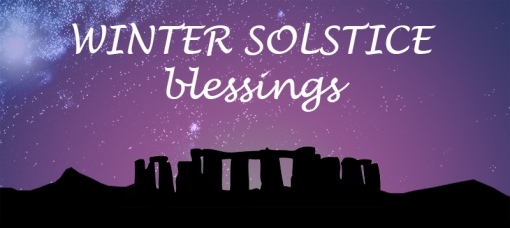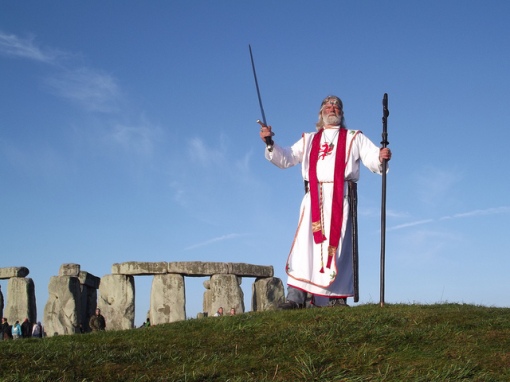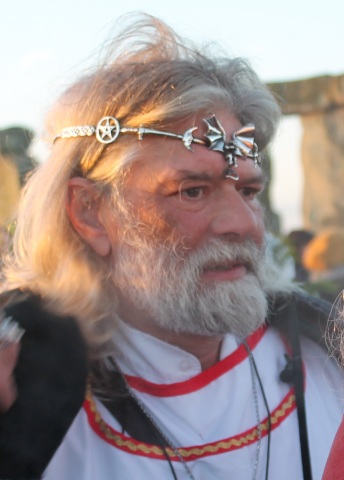As you might expect for such an imposing stone monument, people have sometimes associated Stonehenge with Freemasonry.
Oddly there is actually not much in the way of direct evidence that the Brotherhood ever took much interest in it apart from the odd article in ACQ (“Ars Quatuor Coronatorum”) discussing various aspects of its construction and history.
Various attempts have been made down the years to find a link between Druidism and Freemasonry with some authors claiming that the Druids were the original basis for it – notably G.S. Faber (“Origins of Pagan Idolatry”, 1816), Winwood Reade (“The Veil of Isis”, 1861) and Dudley Cory-Wright (“Druidism – The Ancient Faith of Britain”, 1924).
 There’s even some graffiti that refers to masons – on the southwest side of the tallest stone still standing these lines appear:
There’s even some graffiti that refers to masons – on the southwest side of the tallest stone still standing these lines appear:
(J.DAY )
1802 ( ) MASONS CAMBERWELL
(W.LAW )
… although it’s not clear whether these are stone masons or Freemasons. Clearly they were equipped with excellent quality chisels.
Several of the Druid Orders that sprang up from the 18th Century onwards had Freemasonic roots – whether due to their founders being Freemasons or through the orders’ individual philosophies being quasi-masonic – and one was quite definitely and deliberately masonic in outlook.
That was the Ancient and Archaeological Order of Druids, founded by Wentworth Little (a Freemason) in 1874, whose members all had to have achieved the degree of Master Mason and it was set up specifically to study the alleged links between Druidism and Freemasonry. Winston Churchill was initiated into this order in 1908 at Blenheim Palace.
There are two notable Freemasons who’ve been part of the story of Stonehenge.
Stonehenge.
The first is William Stukeley, the 18th Century Antiquarian who identified the Greater Cursus as a monument (and thought it was probably a Roman racecourse – hence the name he gave it). Stukeley is largely responsible for popularising the idea that Stonehenge is an ancient Druid temple.
The second is Sir Cecil Chubb, who became a Mason in Salisbury at Lodge Elias de Derham, No. 586, on 26 October 1905. 10 years later he purchased Stonehenge at auction from the estate of the Antrobus family for the sum of £6,600, apparently on a whim (it’s said he went to the auction to buy some chairs). In 1918 he gifted Stonehenge and the surrounding 31 acres of downland to “the Nation” and was rewarded with a knighthood.
Finally there’s a very obscure Stonehenge masonic link that involves Sir Laurence Washington, the great great great grandfather of the first President of the USA – renowned Mason, George Washington.
Sir Laurence owned Stonehenge in the early 17th Century and it passed down to his son, the Rev. Lawrence Washington. It is reported that on his deathbed the Rev. Washington said:
“Embedded in the Ancient’s Concrete mixture of 1 part Bluestone and 3 parts Limestone cement, four feet (4 ft, 1.2 m) below my Helestone in Wilts, is my brass Altar of Burnt Offering (5c-5c-3c) containing my Seven (7) golden Tabernacle relics:
My gold Mercy Seat (2.5c-1.5c), my gold Ark of the Testimony (2.5c-1.5c-1.5c), my gold Table for the Shewbread (2c-1c-1.5c), my gold Candlestick, my gold Ephod-Girdle, my gold Breastplate, and my gold Altar of Incense (1c-1c-2c), are there.”
There appears to be only a single source for this story – one Garry Denke – and if you  Google his name you’ll find that his Stonehenge Armageddon Prospect campaign to dig up these relics from beneath the Heelstone has appeared on forums and mailing lists all over the Internet.
Google his name you’ll find that his Stonehenge Armageddon Prospect campaign to dig up these relics from beneath the Heelstone has appeared on forums and mailing lists all over the Internet.
Is Garry in possession of information known only to him and a shadowy conspiracy of hidden societies? Or is Stonehenge simply so ineffable that extra mysteries are constantly attracted to it?
I’ll leave you to draw your own conclusions.
Article by guest blogger and local Stonehenge historian Simon Banton
What is freemasonry?
Freemasonry means different things to each of those who join. For some, it’s about making new friends and acquaintances. For others it’s about being able to help deserving causes – making a contribution to family and society. But for most, it is an enjoyable hobby.

The All Seeing Eye is pictured on the $1 note
Freemasonry is one of the world’s oldest and largest non-religious, non-political, fraternal and charitable organisations. It teaches self-knowledge through participation in a progression of ceremonies. Members are expected to be of high moral standing and are encouraged to speak openly about Freemasonry. The following information is intended to explain Freemasonry as it is practised under the United Grand Lodge of England, which administers Lodges of Freemasons in England and Wales and in many places overseas.
Freemasonry is a society of men concerned with moral and spiritual values. Its members are taught its principles (moral lessons and self-knowledge) by a series of ritual dramas – a progression of allegorical two-part plays which are learnt by heart and performed within each Lodge – which follow ancient forms, and use stonemasons’ customs and tools as allegorical guides.
Freemasonry instils in its members a moral and ethical approach to life: its values are based on integrity, kindness, honesty and fairness. Members are urged to regard the interests of the family as paramount but, importantly, Freemasonry also teaches concern for people, care for the less fortunate and help for those in need. More information
Are you a Freemason and can you share any information about Stonehenge and the Masonic connection? We would love to hear from you.
The Stonehenge News Blog
Follow us on Twitter and Facebook for all the latest Stonehenge News and Stories

 The Pagan celebration of Winter Solstice (also known as Yule) is one of the oldest winter celebrations in the world.
The Pagan celebration of Winter Solstice (also known as Yule) is one of the oldest winter celebrations in the world.



 There’s even some graffiti that refers to masons – on the southwest side of the tallest stone still standing these lines appear:
There’s even some graffiti that refers to masons – on the southwest side of the tallest stone still standing these lines appear: Stonehenge.
Stonehenge. Google his name you’ll find that his Stonehenge Armageddon Prospect campaign to dig up these relics from beneath the Heelstone has appeared on forums and mailing lists all over the Internet.
Google his name you’ll find that his Stonehenge Armageddon Prospect campaign to dig up these relics from beneath the Heelstone has appeared on forums and mailing lists all over the Internet.


 In 1986 he changed his name from John Rothwell (ex biker and ex Army serviceman) by deed poll and he is unique in that his passport – in the name of Arthur Uther Pendragon – shows him wearing his crown.
In 1986 he changed his name from John Rothwell (ex biker and ex Army serviceman) by deed poll and he is unique in that his passport – in the name of Arthur Uther Pendragon – shows him wearing his crown.














